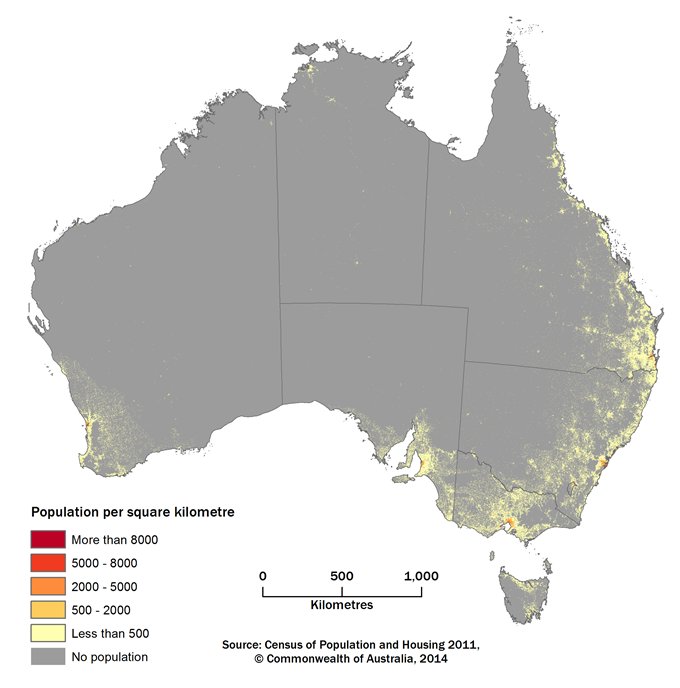
Australian Population Grid a new view of population density .id blog
The most detailed map of Australian population density ever The Australian Bureau of Statistics has released what is probably the most detailed geographic view of population density in.

Australia Population Map DANIELELINA
The world's most accurate population datasets. Seven maps/datasets for the distribution of various populations in Australia: (1) Overall population density (2) Women (3) Men (4) Children (ages 0-5) (5) Youth (ages 15-24) (6) Elderly (ages 60+) (7) Women of reproductive age (ages 15-49). 3200+ Downloads This dataset updates: As needed

Australia Megan Henderson
Population projections Geographic distribution of the population Aboriginal and Torres Strait Islander population Births Deaths International migration Country of birth Marriages, de facto relationships and divorces Households and families International comparison Article - Characteristics of recent migrants to Australia
Map of population density in Australia r/MapPorn
It shows that Sydney had more areas in the highest density range shown in the map with 21km² exceeding 8,000 people per square kilometre compared to Melbourne which only had one grid cell exceeding 8,000 people per square kilometre, around the suburb of Carlton.
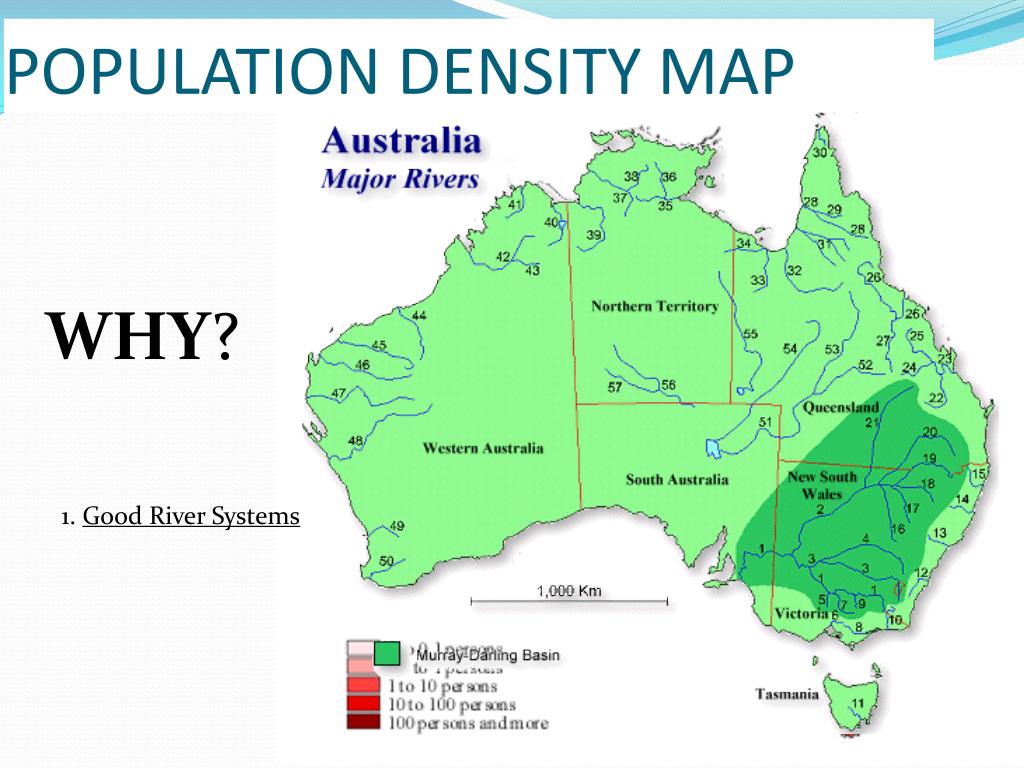
Australian Population Density Map
The 2021 Census counted 25,422,788 people in Australia (excludes overseas visitors), an increase of 8.6 per cent since the 2016 Census. 49.3 per cent of the population were male with a median age of 37 years old. 50.7 per cent of the population were female with the median age of 39 years old. Source: Age ( AGEP)

Population density of Australia Australian maps, Light pollution map
Population change Brisbane had the largest growth (up by 59,200 people), followed by Melbourne (55,000) and Sydney (37,300). Brisbane also had the highest growth rate (2.3%), followed by Perth (1.5%) and Adelaide (1.1%). Download Components of population change
Australian Population Density 2017 [6776X4732] MapPorn
The population of Australia is estimated to be 26,964,200 as of 12 January 2024. [1] Australia is the 55th [2] most populous country in the world and the most populous Oceanian country.

The McCrindle Blog Population growth rate, Population growth, Infographic
Australia's Population Map 2023 In our latest population map we bring to you a visualised overview of Australia's Population and Generational Profile, to help you understand the demographics of this great country. Insights you'll love exploring: Australia's population growth Median age Employment Birthrate and life expectancy

Population density of Australian states and territories (2019) r
Population 97K + 100K + 250K + 500K + 750K + 1M + 2.5M + 4.6M + showing: 10 rows Australia Area and Population Density It is also the most populous country in Oceania, three times more populous than its neighbor Papua New Guinea (8.2 million) and 5 times more populous than New Zealand (4.5 million).

The most detailed map of Australian population density ever Vivid Maps
In Wales, the population grew by 1.4% or 44,000 people. In Crawley, the population size has increased by 11.2%, from around 106,600 in 2011 to 118,500 in 2021. This is higher than the overall increase for England (6.6%), where the population grew by nearly 3.5 million to 56,489,800. Nearby areas like Horsham and Reigate and Banstead have seen.

the map shows australia population distribution by post code
The current population density of Australia in 2023 is 3.42 people per square kilometer, a 1% increase from 2022. The population density of Australia in 2022 was 3.38 people per square kilometer, a 0.99% increase from 2021. The population density of Australia in 2021 was 3.35 people per square kilometer, a 0.98% increase from 2020.

Map of Australia showing the population density (from ABS); states and
Statistical data - Population density according to the administrative structure. The population data of the table below is census data from 2021, last available data. Click on the column header brings the table in order of the column header. The default order is the state name. The following table illustrate the external territories of Australia.
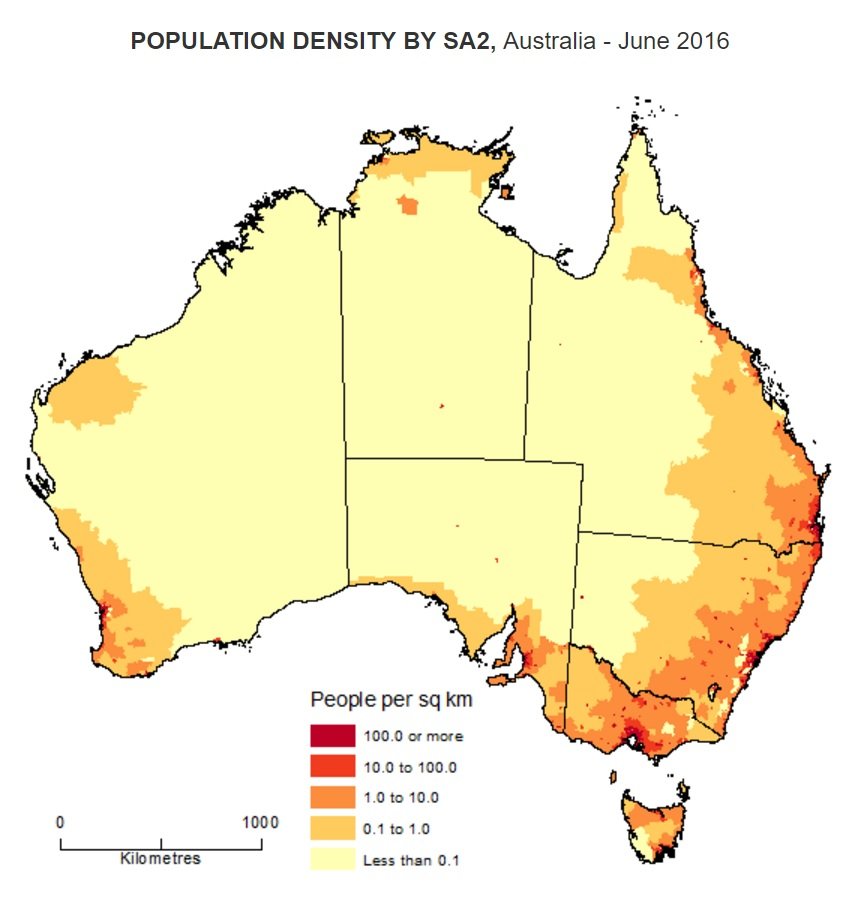
Australia demografía La guía de Geografía
The Australian Bureau of Statistics has released what is probably the most detailed geographic view of population density in Australia. The dataset shows the population per square kilometre from the 2011 census, the first time a grid has been used for these figures.
Density Australia Population Map
In 2021, population density for Australia was 3.3 people per sq. km. Between 1972 and 2021, population density of Australia grew substantially from 1.7 to 3.3 people per sq. km rising at an increasing annual rate that reached a maximum of 2.56% in 1974 and then decreased to 0.14% in 2021. Population density is midyear population divided by land area in square kilometers.

Population density map of Australia Australia map, Australian maps, Map
The Population Density map of Australia shows the distribution of the population based on Kontur Population Dataset. The map contains hexagons of approximately 1,300 feet (400 meters) in size. The same map can be created by you for any country or state, using this tutorial.

Population density by Australian electoral divisions Australia map
A set of interactive maps examining the geographic distribution of total rented dwellings and privately rented dwellings, lone person households, apartments of 4 storeys and more, and dwellings in need of one or more extra bedrooms, by Statistical Areas Level 2 (SA2) of residence. Source: Australian Census of Population and Housing, 2016.